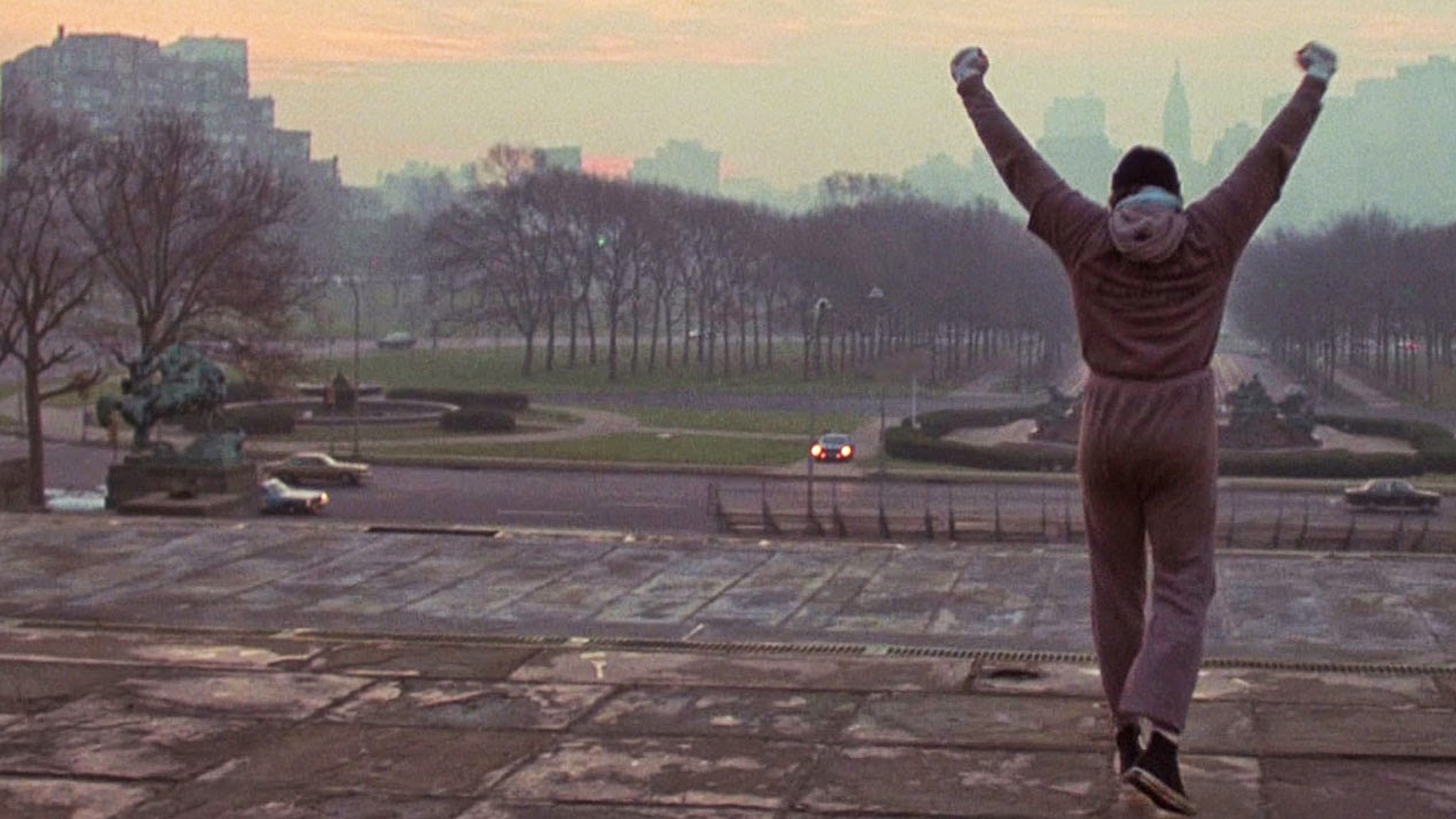Table of Contents Show
Back in 2018, April was named the official National Month of Hope after a non-profit group called Mothers in Crisis started a campaign to bring more awareness to their cause of encouraging the use of hope to help people and families live substance-free lives. Although it feels like it’s been much longer — and we all know why — in only its fourth year, the National Month of Hope has evolved into an all-encompassing invigoration of hope.
Using hope to inspire healthy living and quality family life is exceptional, but it doesn’t have to end there. Something as simple as an encouraging word to a friend can incite hope. Perhaps even a modest donation of food or clothing to a local shelter can invoke the thought within a person in need that maybe, just maybe, not all hope is lost. Hope comes in all shapes and sizes, and none of them are arbitrary. There may not be a better showcase of the importance of hope than in the stories we weave from our culture into books, movies, television, and other mediums. Whether on a page or a screen or anywhere in between, characters in these worlds inspire hope in all sorts of ways. So, keep your head up because here are eight fictional characters who embody the spirit of the National Month of Hope.
Rocky Balboa: “He Is Not Human. He’s Like A Piece Of Iron.” (( Stallone, Sylvester, director. Rocky IV. United Artists and Metro-Goldwyn-Mayer, 1985. ))
Let’s get a major cliché out of the way: Rocky Balboa. The Italian Stallion is the ultimate underdog for a reason. Rocky tells us, “You, me, or nobody is gonna hit as hard as life. But it ain’t about how hard ya hit. It’s about how hard you can get hit and keep moving forward. How much you can take and keep moving forward” (( Stallone, Sylvester, director. Rocky Balboa. Metro-Goldwyn-Mayer, Columbia Pictures, and Revolution Studios, 2006. )). That should give us hope that no matter what happens, if we can move forward a little longer, things might get better.
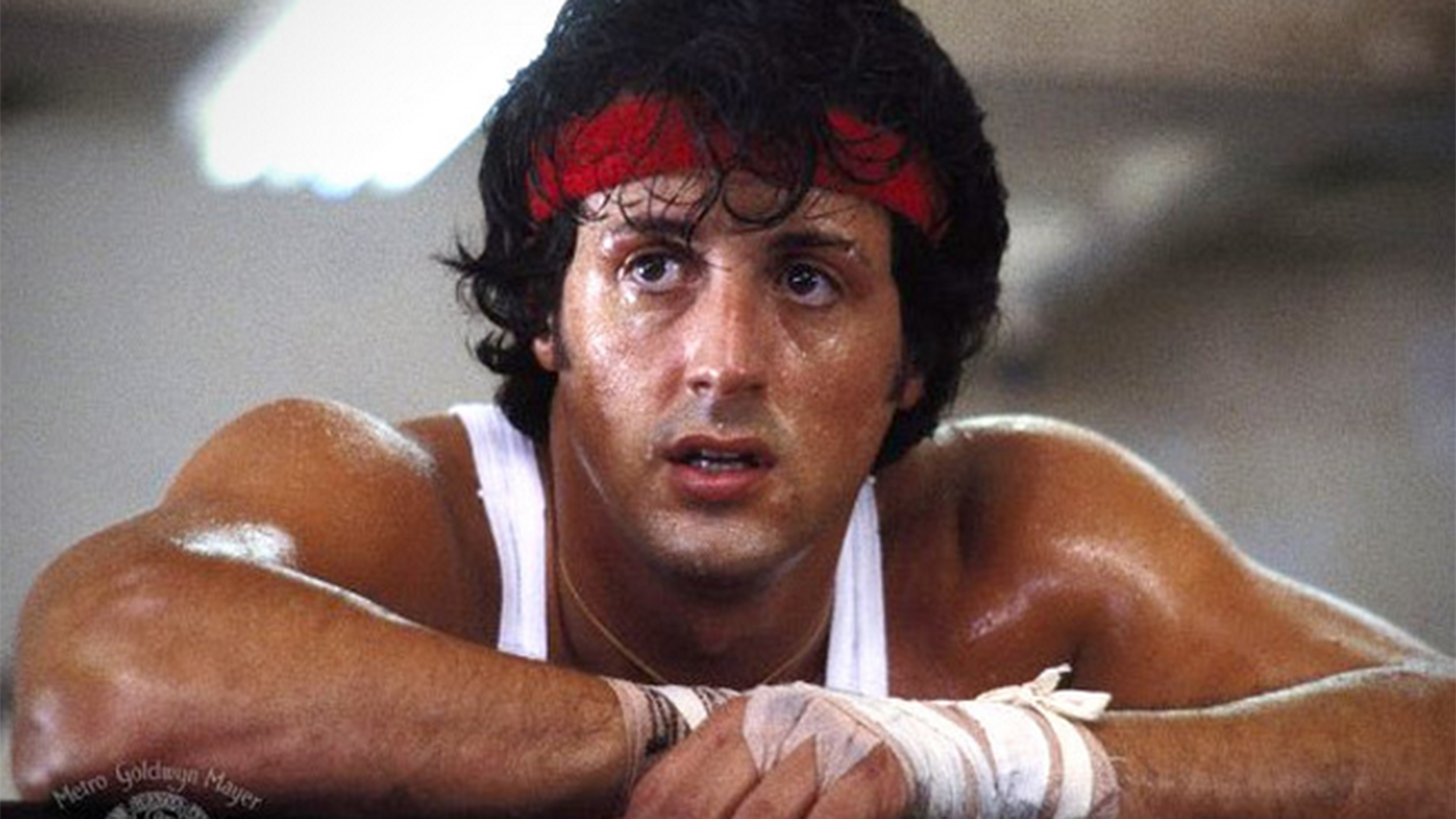
When I was a bright-eyed and naïve young boy, I got the Rocky five-movie collection on VHS — Google it, kids — and it was the only gift that mattered to me that year. I watched all five films — yes, that includes Rocky V — multiple times in a matter of days. By the next week, I was creating my own DIY boxing training course in my garage, complete with a boom box to blast Survivor’s “Eye of the Tiger.” It’s silly, but from the first time I saw Rocky (1976), I felt like I could take a punch from life just a little bit better. And that gives me hope in this hard-hitting world.
Samwise Gamgee: “There’s Some Good In This World…And It’s Worth Fighting For.” (( Jackson, Peter, director. Lord of the Rings: The Two Towers. New Line Cinema and WingNut Films, 2002. ))
I suppose Samwise Gamgee is an unsurprising addition to this list, same as Rocky. Still, I would be remiss to leave off the loyal hobbit. Whether it’s in J.R.R. Tolkien’s beloved books or in Peter Jackson’s Lord of the Rings films, Samwise is the ever-dedicated companion to Frodo on their quest to destroy the One Ring in the fires of Mount Doom. Sam’s significance stems not only from his steadfastness, but also from the hope that he inspires — in Frodo and the audience. He won’t be corrupted by the overwhelming darkness no matter how grim things look.
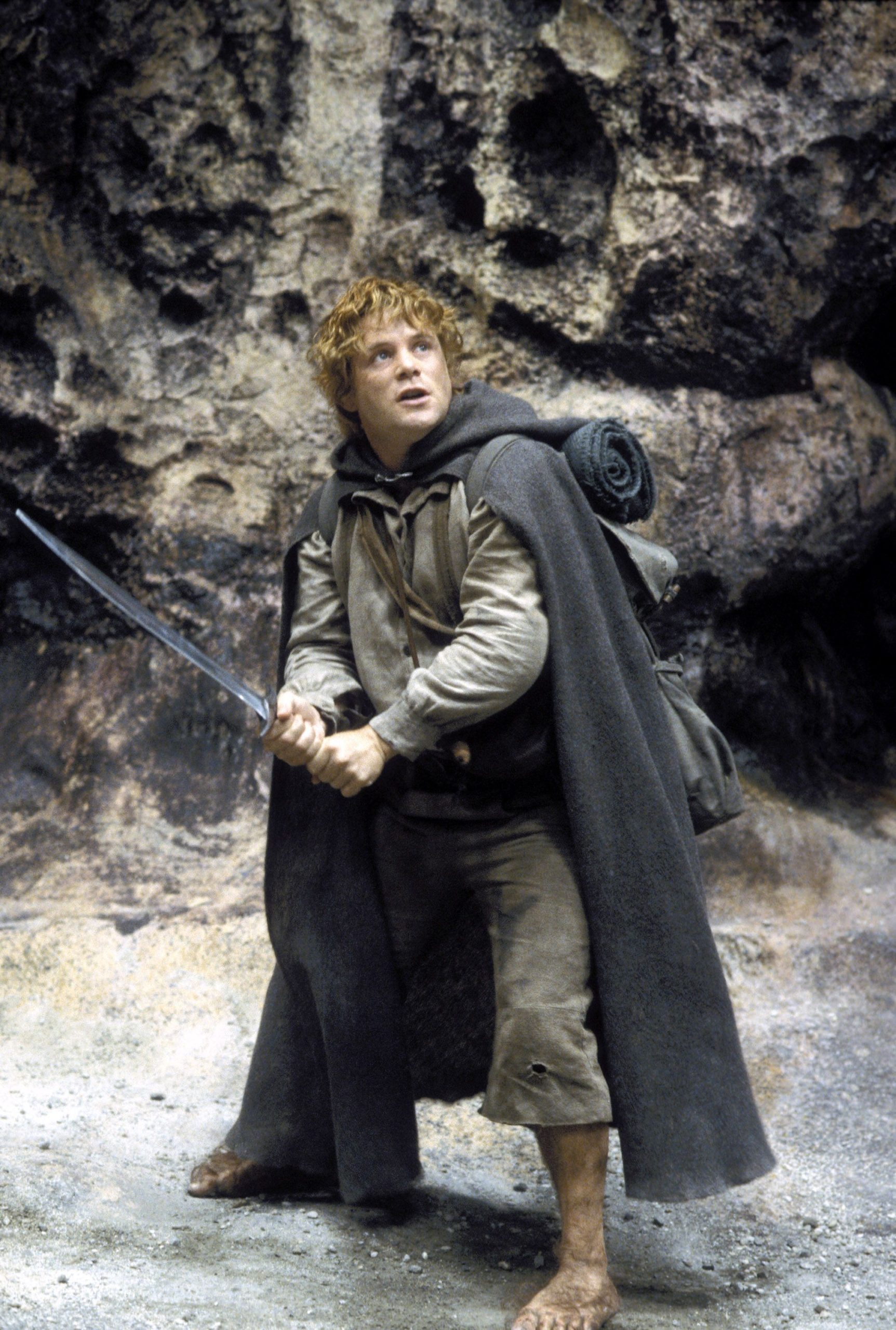
Sam somehow always managed to stay focused in the massive world of Middle-earth, and he was always there to shine a ray of light — sometimes literally — when it was needed most. There isn’t a person out there who couldn’t stand to learn something about hope from Samwise Gamgee. We all should hope to have a friend like him. And, perhaps more importantly, we should all hope to be a friend like him.
Leslie Knope: “One Person’s Annoying Is Another’s Inspiring And Heroic.” (( Parks and Recreation. “Gin It Up!” Peacock. October 17, 2013. ))
No matter your political views, I don’t think it is a stretch to say that we could use a hell of a lot more politicians like Leslie Knope in our government. Leslie is unapologetically optimistic, kind, and considerate of others before herself. And not just during election season. Despite years being a public servant in the Pawnee Parks and Recreation department, a thankless and difficult job, she manages to stay focused on the positive impact she can have in the community, no matter how small or large. And always with a genuine smile.
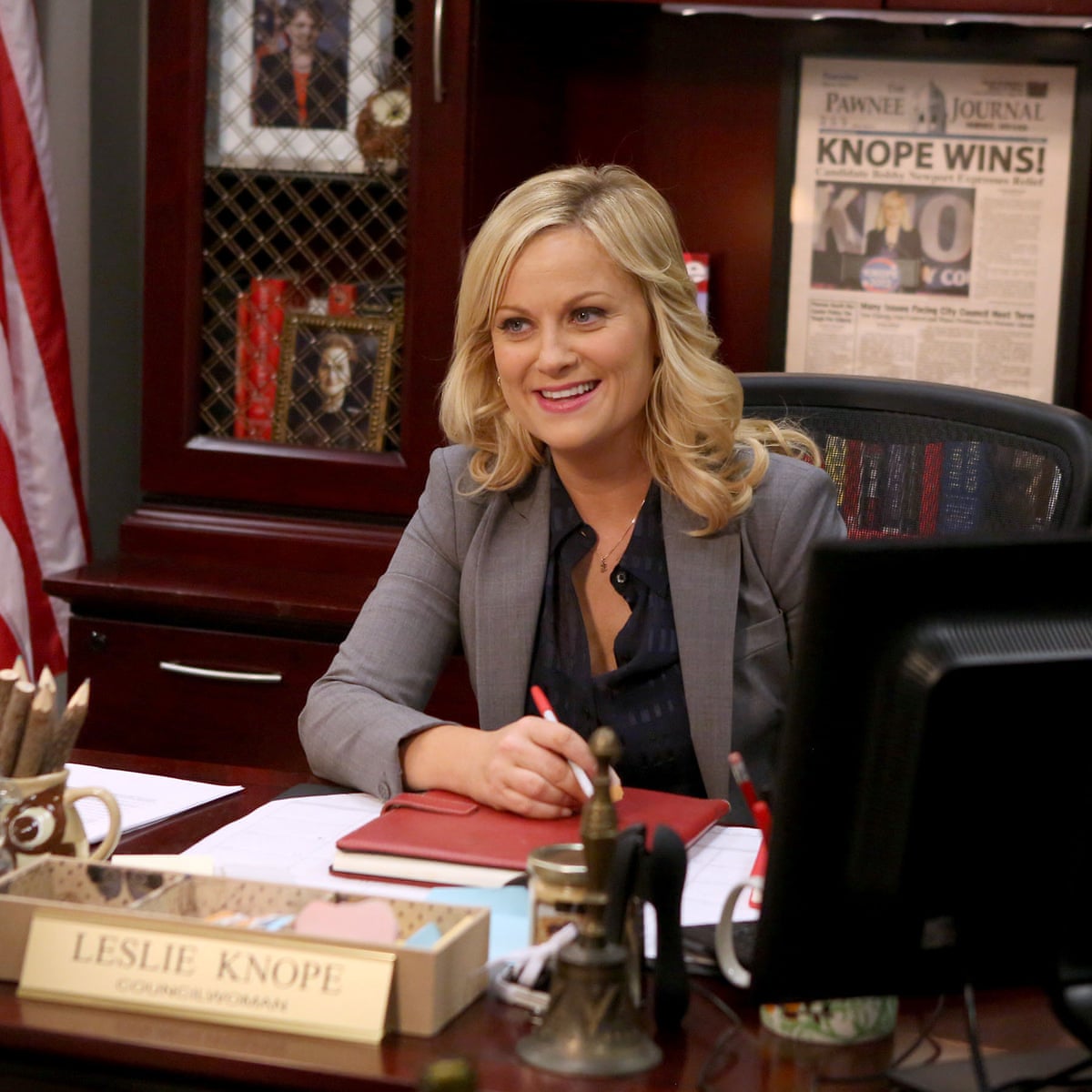
Leslie Knope embodies this month of hope because she’s relentless in everything she does. She’s caring and selfless. She’s downright hilarious. She’s the best pal we all wish we had and the type of person this world needs more of. And not just because she gives the best gifts. Seriously, she got her husband, an avid Game of Thrones fan, an actual Iron Throne. Still, it’s not the physical item, but the kindness, thoughtfulness, and consideration that goes into her presents that make them so special. Knope equals hope.
George Bailey: “The Richest Man In Town.” (( Capra, Frank, director. It’s a Wonderful Life. Liberty Films, 1946. ))
The idea that having a rich, full life is not the same thing as being monetarily rich has been a part of stories for as long as we’ve been telling them. Yet, we still don’t seem to have grasped the concept. In a world that is driven more by money and social image than ever before, we’d be wise to look to George Bailey for hope. It’s a Wonderful Life (1946) and its hero, George, rouse hope because their story makes the simple suggestion that each and every one of us has an impact on everyone we meet. If we’re kind and compassionate, that impact can spread in amazing ways.
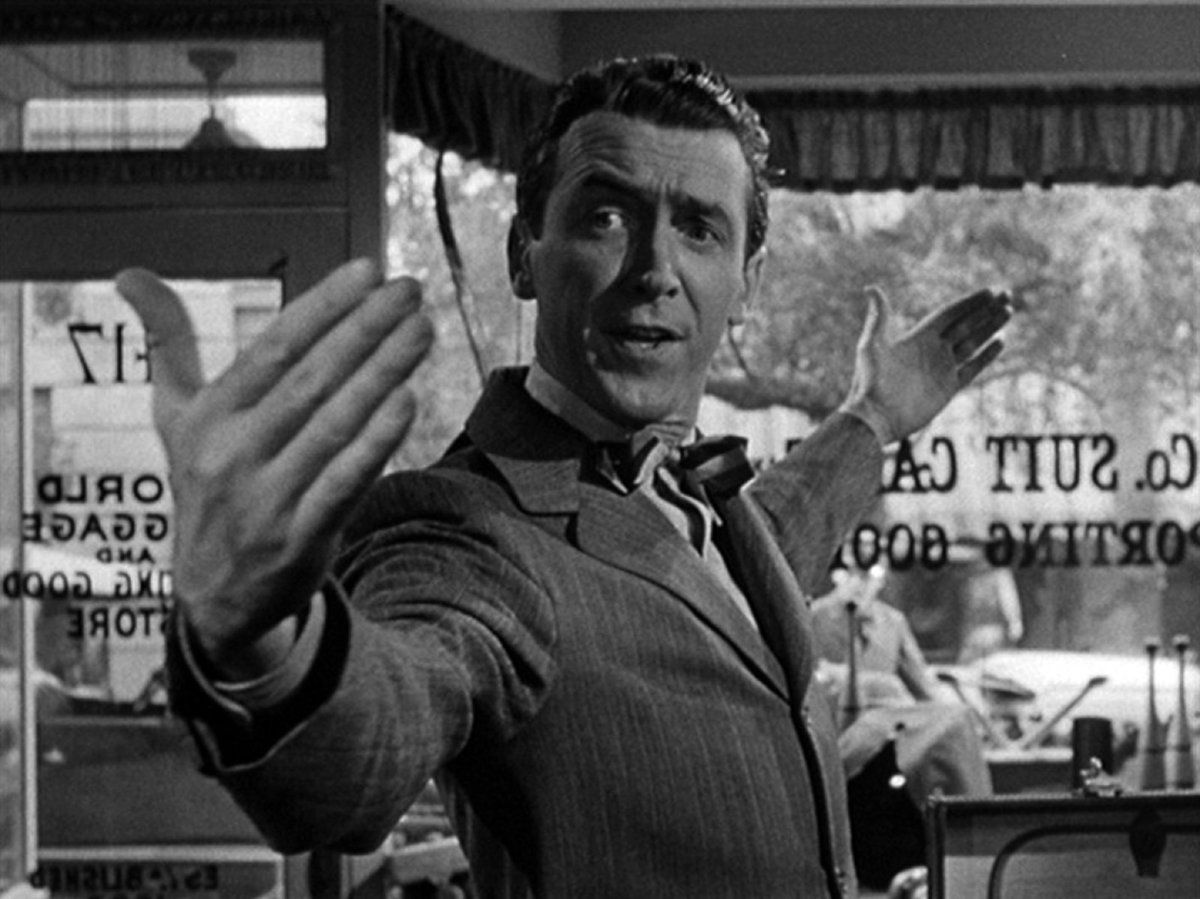
On a personal level, I learned one of the most useful lessons of my life from a fleeting moment in that movie. When a young George Bailey is confronted with a difficult situation, he looks distraught until a sign above the drugstore door catches his eye, reminding him to “Ask Dad, he knows” (( Capra, Frank, director. It’s a Wonderful Life. Liberty Films, 1946. )). Without hesitation, George sprints straight to his father at the old Bailey Building and Loan to get help. I can’t tell you how many times that thought has popped in my head when it seemed there was no answer to be had. Lucky for me, my dad usually had one.
George Bailey and It’s a Wonderful Life give my dad hope. Like George, my dad always wanted to shake the dust of his little hometown off his feet and do bigger things in new and exciting places. He did and is proud to have done so. And I like to think that George gave him that extra push when he needed it. In the end, I think that the part of George Bailey that inspires the most hope for my dad is what Clarence Odbody, the guardian angel, said, “Remember, no man is a failure who has friends” (( Capra, Frank, director. It’s a Wonderful Life. Liberty Films, 1946. )). There’s something both hopeful and comforting in that sentiment.
Mulan: “When Will My Reflection Show Who I Am Inside?” (( Bancroft, Tony and Barry Cook, directors. Mulan. Walt Disney Pictures, 1998. ))
The “Disney Renaissance” of the 1990s gave us some of the most beloved animated features of all time. From The Little Mermaid (1989) to The Lion King (1994), Disney kept churning out hits. Before the computer-generated graphics pioneered by Toy Story (1995) fully took hold of children’s animation in the new millennium, there was Mulan (1998). Mulan refused to be resigned to what society at the time said she had to be: a wife and mother. It is something relatable beyond even gender roles. Many aspects of society and popular culture are constantly screaming at us to be somebody we’re not. Mulan took control of her life and was able to become the person and hero she knew she was always meant to be. When everyone told Mulan that she couldn’t be a soldier or that she wasn’t strong enough to fight, she became a great soldier and fought with more heart than anyone.
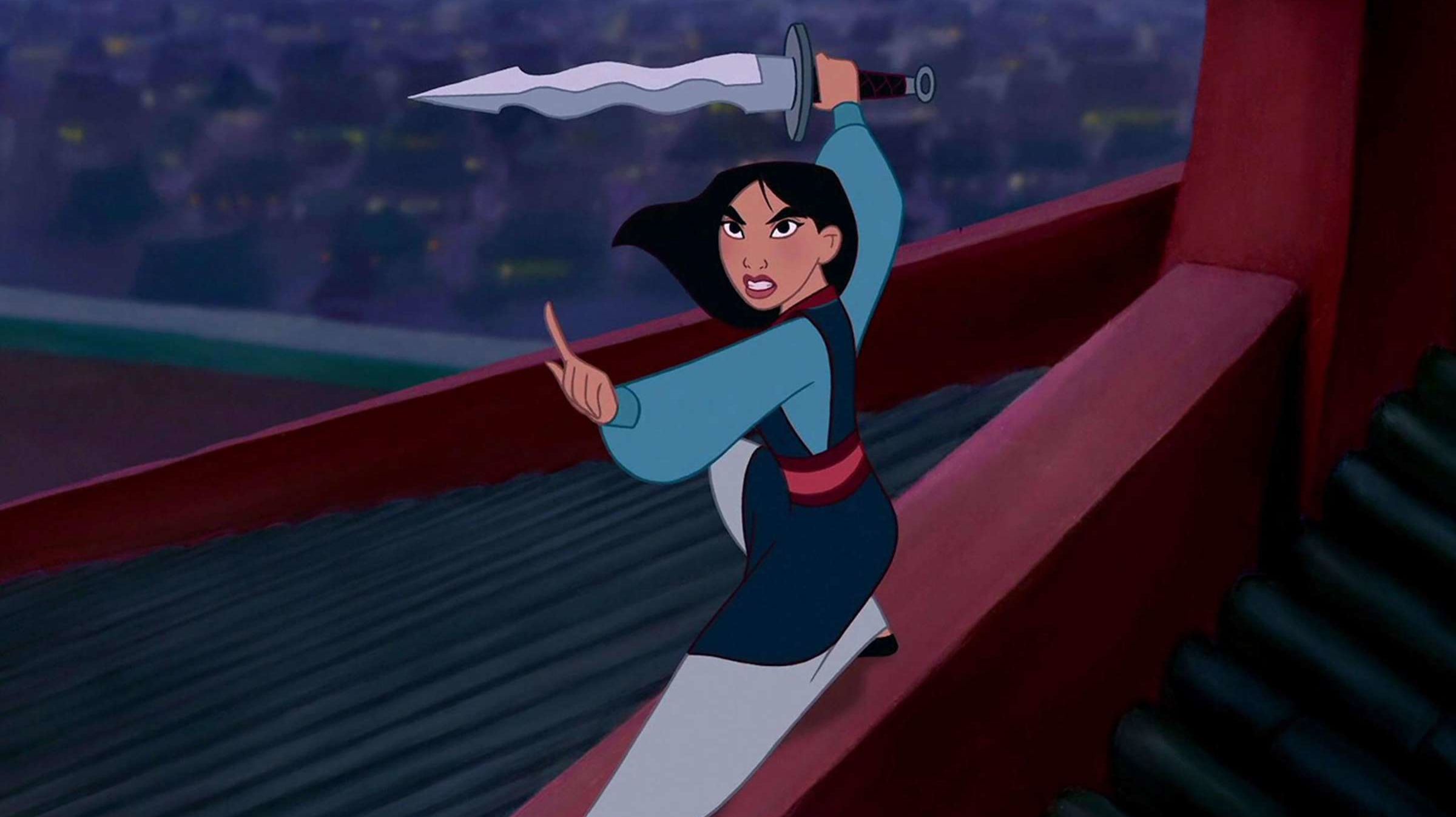
It’s a story that’s been told a thousand times, but Mulan’s will and strength of character always stuck with me. Sometimes, when I tell people that I love basketball and have played it my whole life, I get a confused up-and-down glance being that I’m only five feet, six inches tall. Some boldly point out my vertically challenged size and question whether I should have played the height-oriented sport at all. But I knew that basketball was who I was, no matter what other players or coaches told me. In a way, Mulan’s reluctant spirit gave me — and continues to give me — the hope that as long as I’m true to myself, I’m doing the right thing. Tall people be damned.
Captain Kathryn Janeway: “There’s Coffee In That Nebula.” (( Star Trek: Voyager. “The Cloud.” Paramount+. February 13, 1995. ))
Imagine you are part of a starship crew on a relatively short mission and before you know it, you’ve been unexpectedly thrust seventy thousand lightyears across the galaxy with no conceivable way to get home in your lifetime. Everyone you knew on earth, and every aspect of your former life has been taken away, seemingly forever. That’s what happened to Captain Kathryn Janeway and her crew on Star Trek: Voyager (1995-2001). I can’t imagine a more appropriate scenario for the necessity of hope. It’s a good thing they had the unflappable captain at the helm.
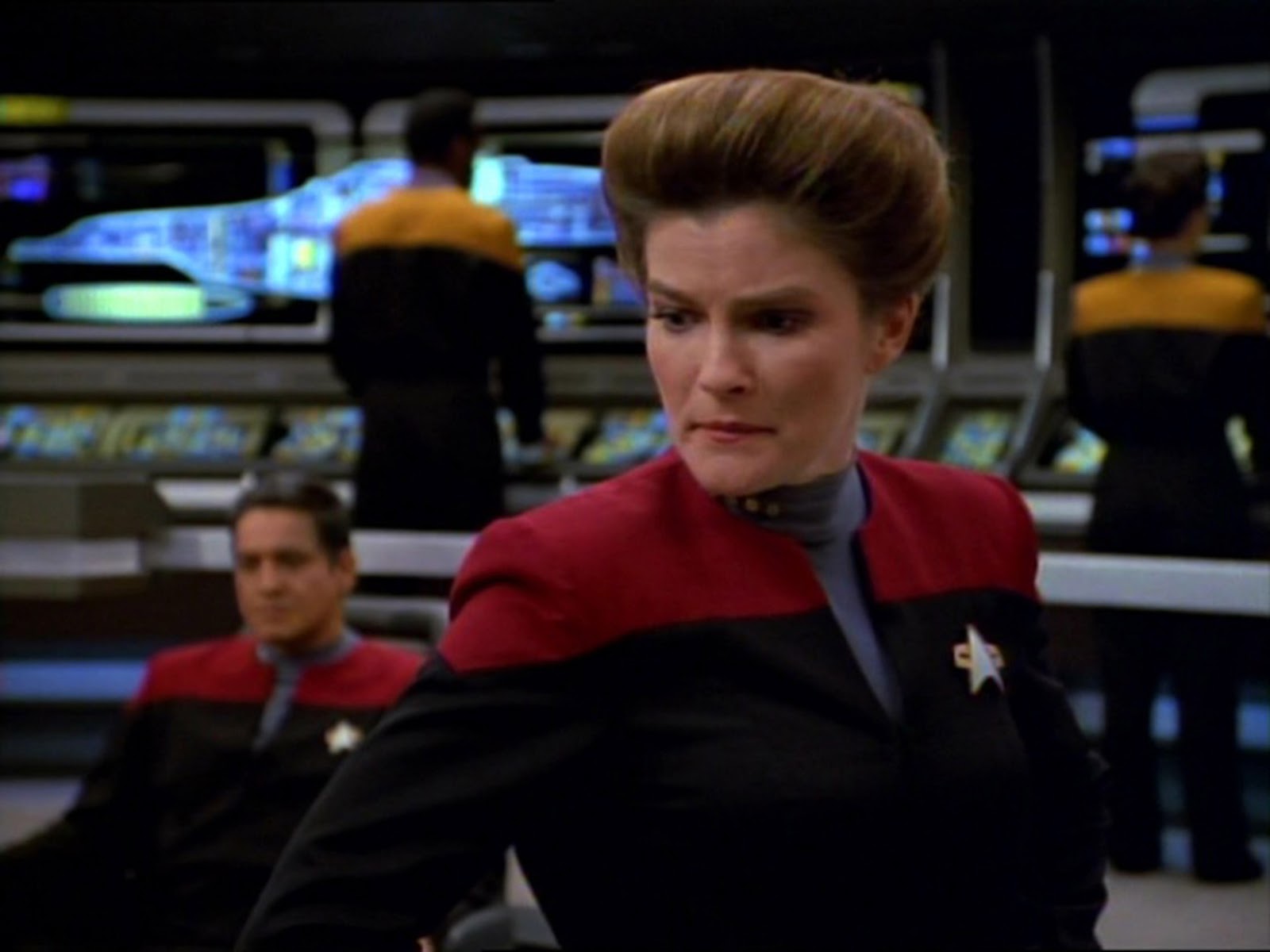
Despite the vast and unfamiliar depths of space, Captain Janeway holds true to her principles even when it would be easier not to. She’s not always popular for it, either. There are those who argue that the structure of Starfleet and the moral codes of humanity are illogical, being that they are so far removed from such things. But Janeway sticks to her guns — or photon torpedoes — regardless of the pushback, which creates a sense of connection to where they are trying desperately to return to: home. Captain Janeway goes to great lengths to maintain that connection to earth, even braving a dangerous nebula to retrieve an element needed to make something many of us humans can’t live without: coffee. If it wasn’t for Janeway’s leadership and a sense of purpose, the crew of the U.S.S. Voyager wouldn’t have had that collected feeling of hope in the face of uncertainty that eventually got them back to earth.
Philip Banks, AKA Uncle Phil: “Courage Is Being The Way You Are No Matter What Anybody Says About You.” (( The Fresh Prince of Bel-Air. “72 Hours.” HBO Max. March 11, 1991. ))
What is more hopeful than being a parent? You can research, practice, and prepare for everything this scary world has to throw at your kids, but in the end, mostly all you can do is hope. Hope that you taught them enough. Hope that they listened even when you thought they weren’t. And hope that they will do the right thing, no matter the consequences. The lovable and sometimes intimidating Uncle Phil from the classic sitcom, The Fresh Prince of Bel-Air, invokes hope by guiding his children — and that includes his nephew, Will — through life’s inevitably difficult situations.
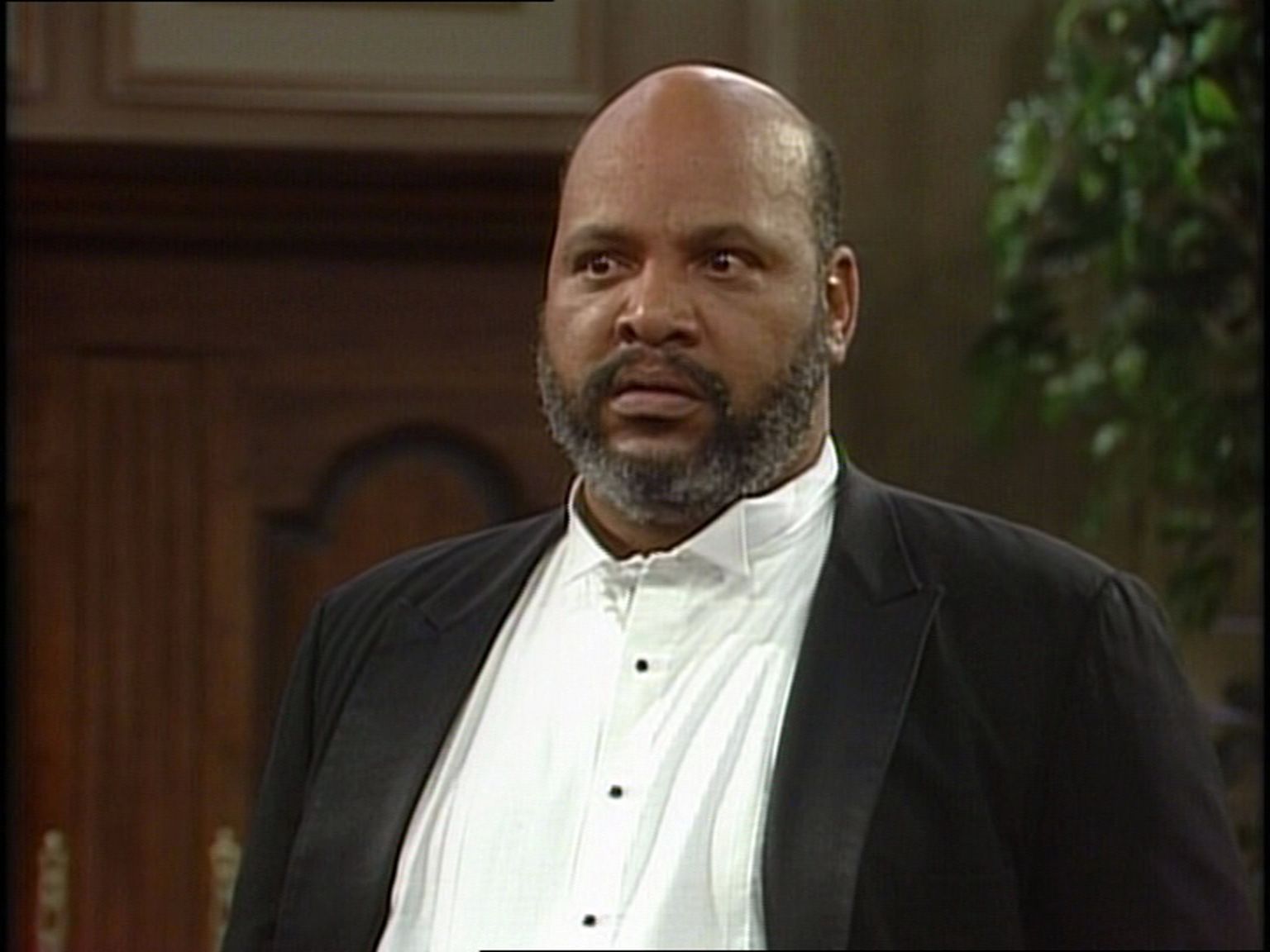
Uncle Phil is a role model for us all. Whether he was rescuing Will from a pool hall hustler or scolding Carlton and Will for running off their butler, Geoffrey, Uncle Phil radiates hope. His wisdom, compassion, and determination in all aspects of life instill in us the hope and belief that it doesn’t take superpowers or ridiculous technology to change the world, just honesty, and love. Having one of the most terrifying “dad scowls” in television history doesn’t hurt either.
Philip J. Fry, AKA Fry: “You Can’t Give Up Hope Just Because It’s Hopeless! You Gotta Hope Even More…” (( Futurama. “Godfellas.” Hulu. March 17, 2002. ))
Philip J. Fry is Planet Express’ Delivery Boy, First Class. Of the plethora of lovable oafs and doofuses to grace the TV, Fry is the purest of heart. Sure, he can be a slob that eats cereal in his underwear while watching cartoons, and yes, he doesn’t mind eating an egg salad sandwich from a truck stop’s bathroom vending machine, but in the end, Philip J. Fry always tries to do what he feels is right.
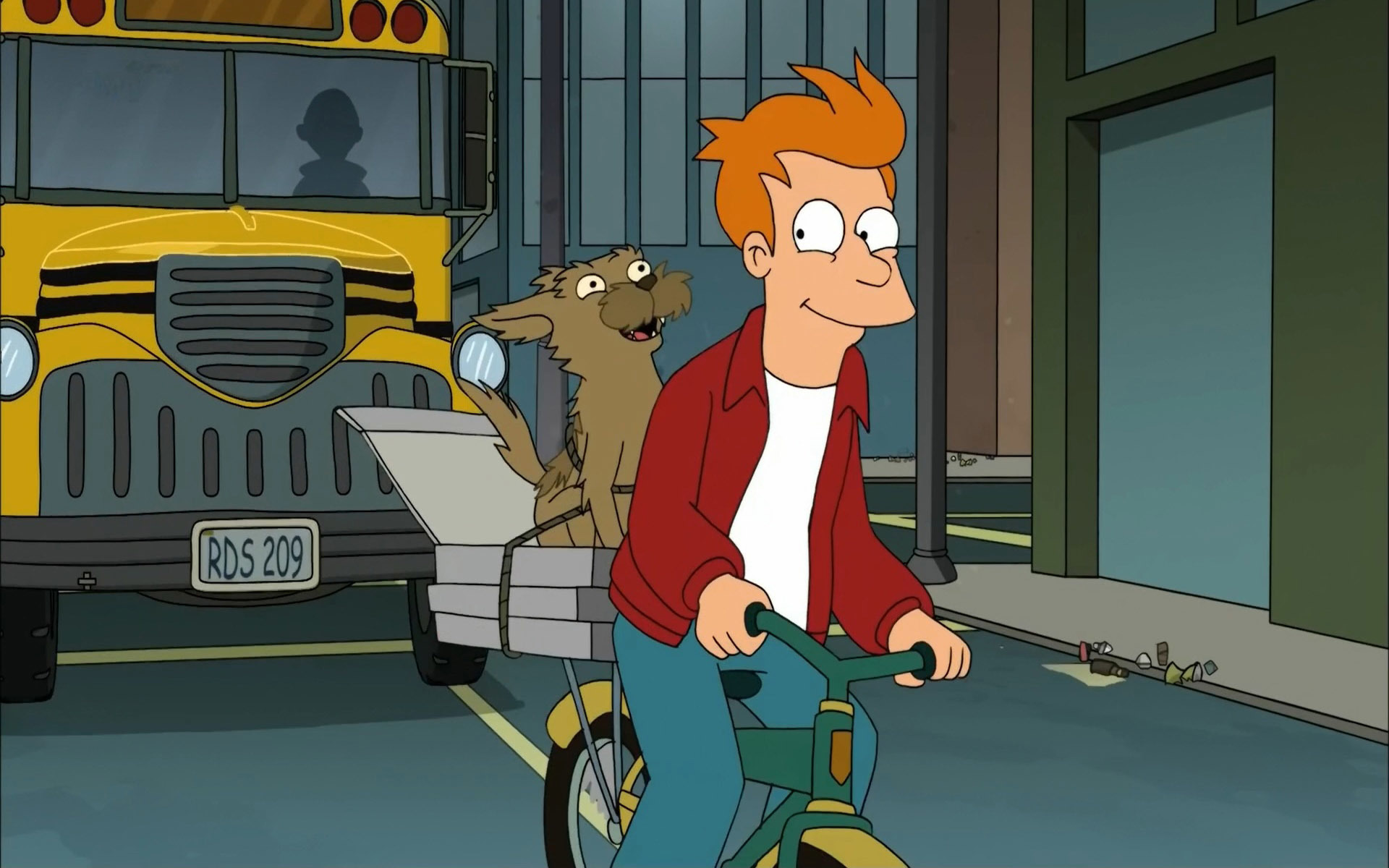
Fry has, seemingly at the time, sacrificed himself for the existence of the universe even though he felt cheated out of his own life. There was even a time when he gave up his future just so Leela, the woman he loves, could have a happy life regardless of Fry not being able to be a part of it. We all have flaws, big and small, but Fry is the ultimate hope that despite these flaws, we can achieve great things. We can make an impact. We can fall in love. We can choose to do the right thing. Just try to avoid becoming your own grandpa, like Fry.
Hope Should Be A Part Of Every Month
I know what you’re thinking, “Wait, that’s the list? No Superman or Batman? No Harry or Hermione? No Luke or Leia?! This list is preposterous.” Indeed, there was no way to include every character that inspires hope from our fictional lexicon. The unsung hopeful heroes like Leslie Knope and George Bailey, fighting the mundane rather than the obviously malicious, deserve to be recognized as beacons of hope the same as the determined starship captains and unflinching hobbits. In the spirit of these inspiring characters and the National Month of Hope, let us all maintain a hopeful attitude and see how far we can carry it beyond just one month.
